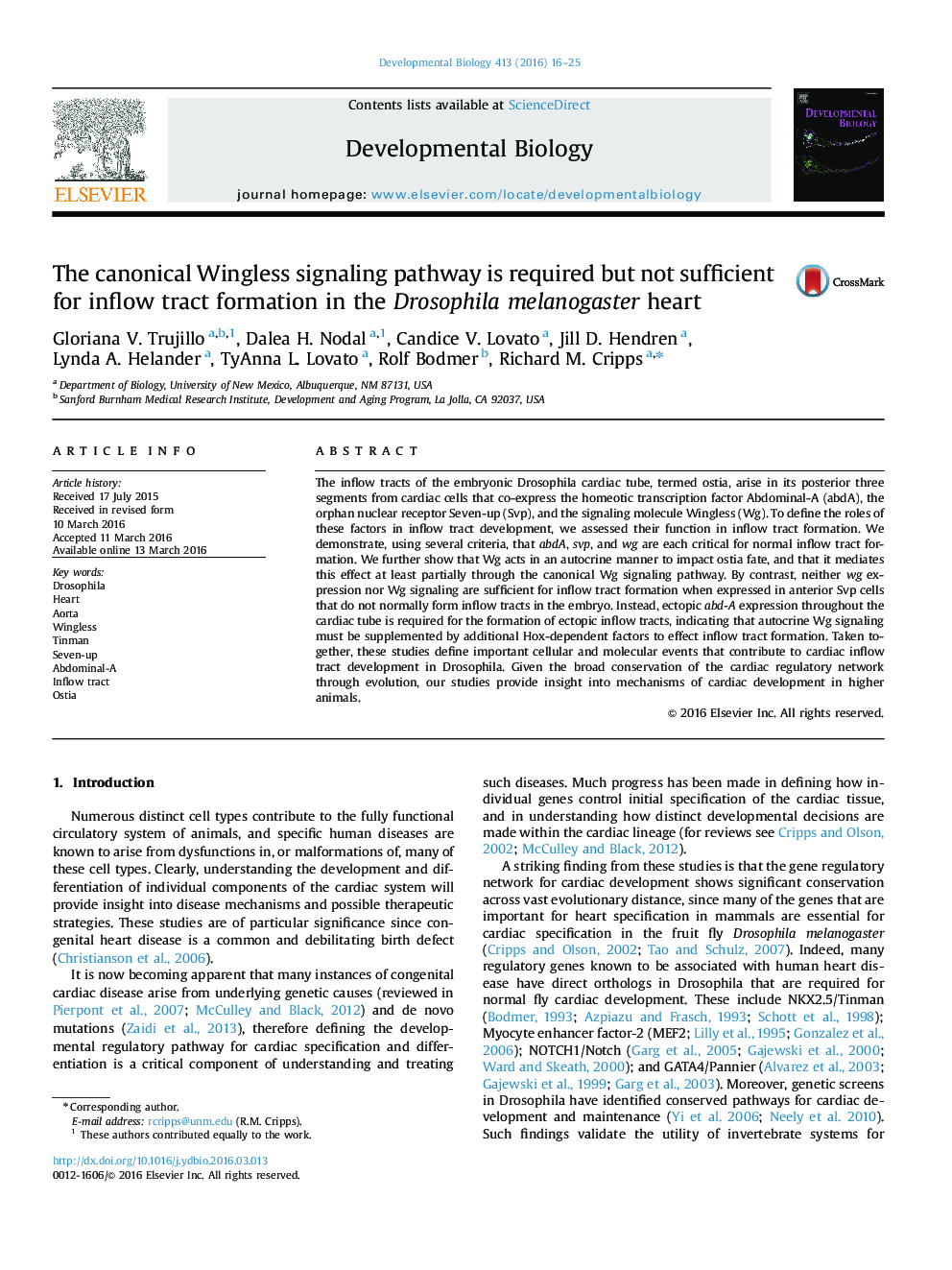| Article ID | Journal | Published Year | Pages | File Type |
|---|---|---|---|---|
| 10931193 | Developmental Biology | 2016 | 10 Pages |
Abstract
The inflow tracts of the embryonic Drosophila cardiac tube, termed ostia, arise in its posterior three segments from cardiac cells that co-express the homeotic transcription factor Abdominal-A (abdA), the orphan nuclear receptor Seven-up (Svp), and the signaling molecule Wingless (Wg). To define the roles of these factors in inflow tract development, we assessed their function in inflow tract formation. We demonstrate, using several criteria, that abdA, svp, and wg are each critical for normal inflow tract formation. We further show that Wg acts in an autocrine manner to impact ostia fate, and that it mediates this effect at least partially through the canonical Wg signaling pathway. By contrast, neither wg expression nor Wg signaling are sufficient for inflow tract formation when expressed in anterior Svp cells that do not normally form inflow tracts in the embryo. Instead, ectopic abd-A expression throughout the cardiac tube is required for the formation of ectopic inflow tracts, indicating that autocrine Wg signaling must be supplemented by additional Hox-dependent factors to effect inflow tract formation. Taken together, these studies define important cellular and molecular events that contribute to cardiac inflow tract development in Drosophila. Given the broad conservation of the cardiac regulatory network through evolution, our studies provide insight into mechanisms of cardiac development in higher animals.
Related Topics
Life Sciences
Biochemistry, Genetics and Molecular Biology
Cell Biology
Authors
Gloriana V. Trujillo, Dalea H. Nodal, Candice V. Lovato, Jill D. Hendren, Lynda A. Helander, TyAnna L. Lovato, Rolf Bodmer, Richard M. Cripps,
